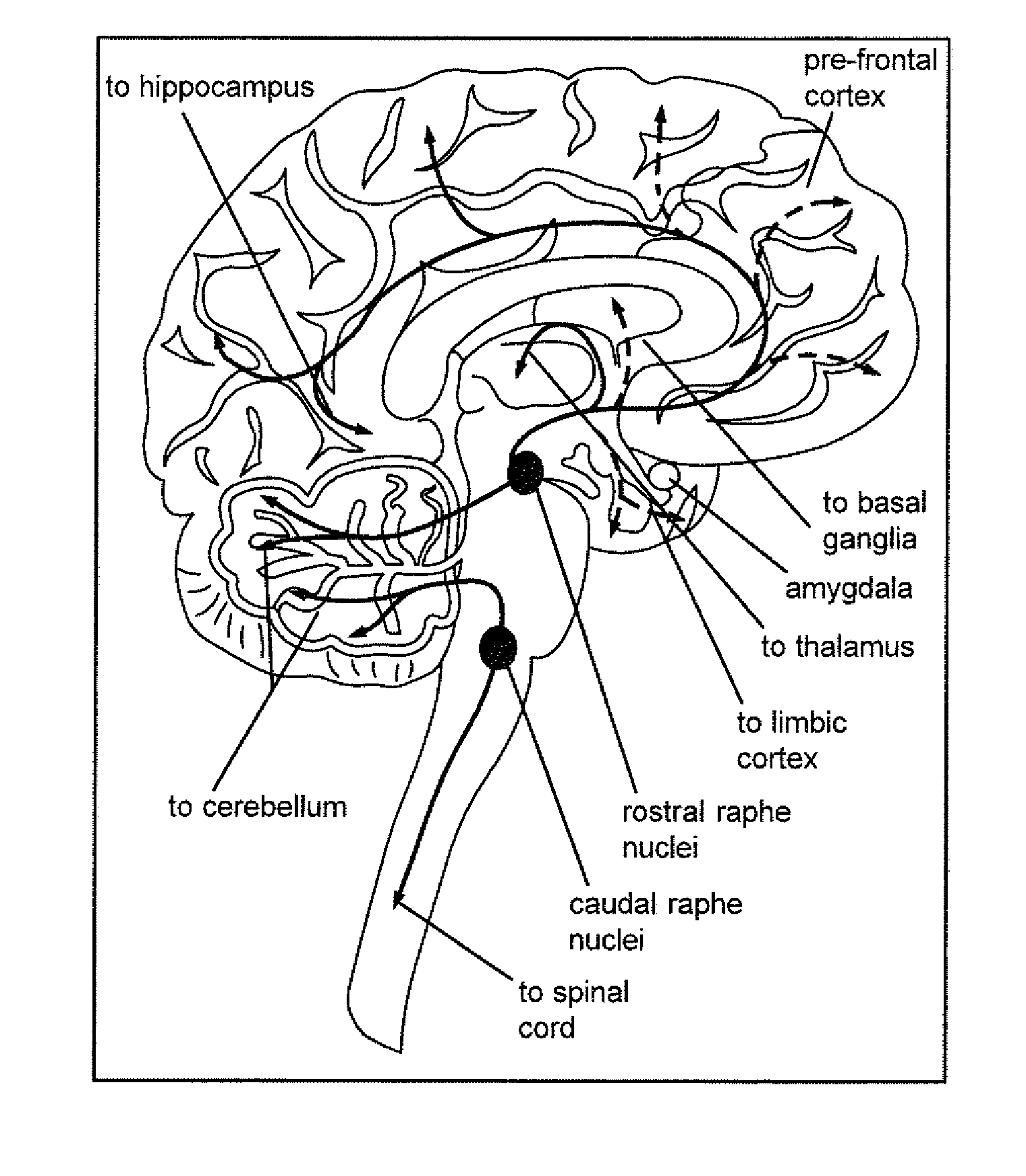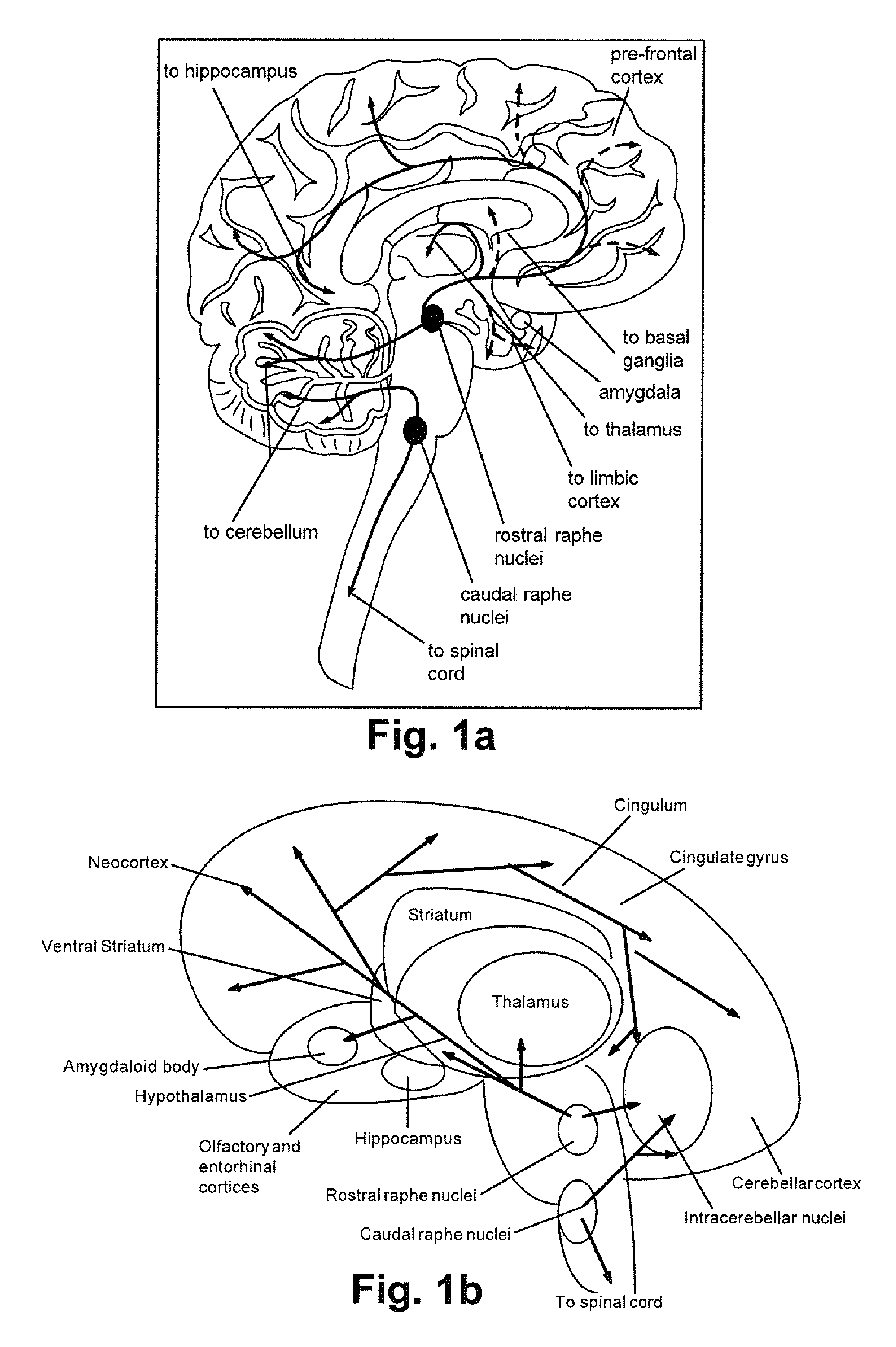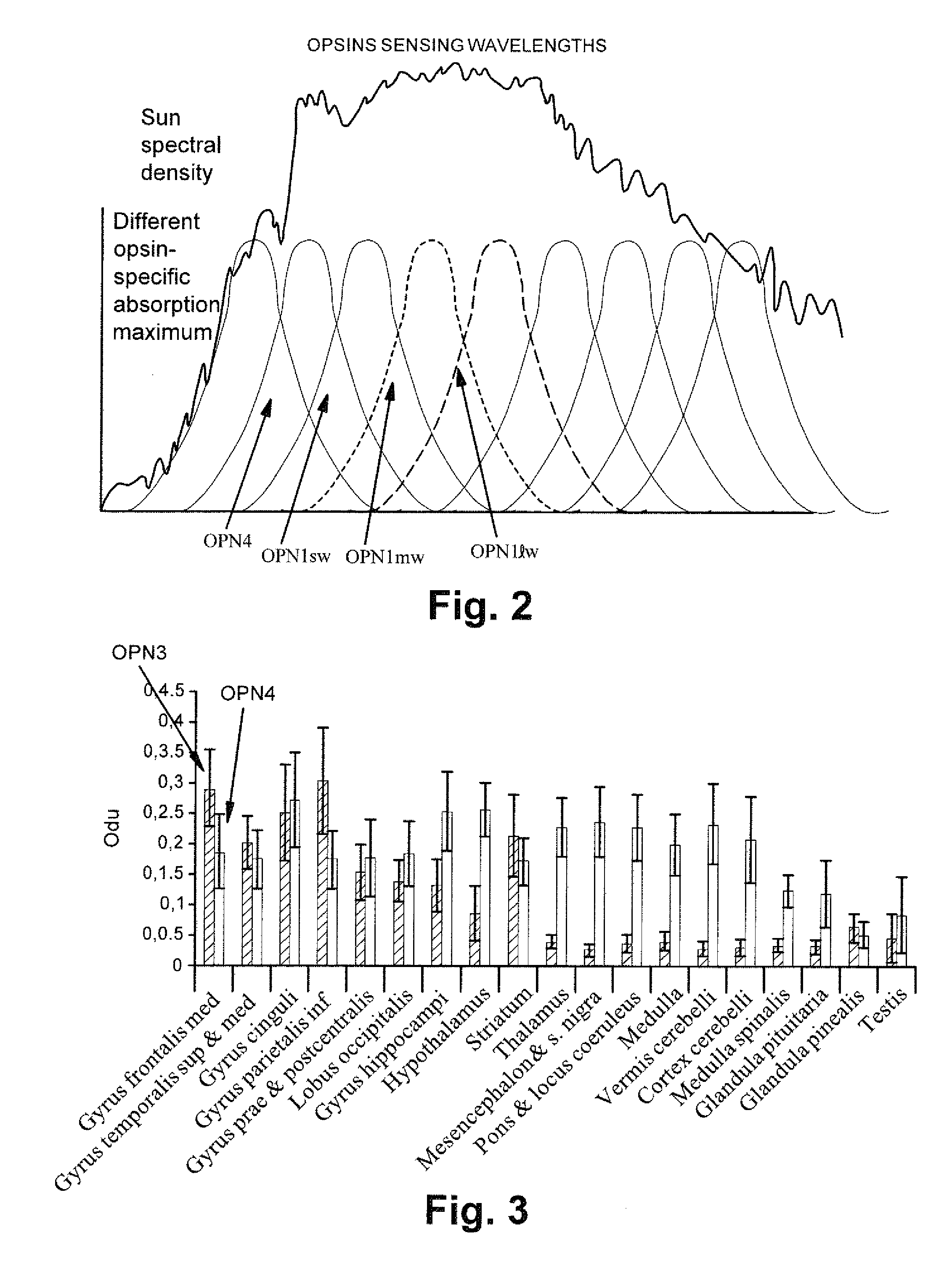Device and method for altering neurotransmitter level in brain
a neurotransmitter and level technology, applied in light therapy, radiation therapy, therapy, etc., can solve the problems of lack of accurate administration, lack of knowledge about light treatment routes, and little is known about the dose of light needed, so as to prolong the duration of positive effects of dopamine, increase the sensitivity of brain reward systems, and intense addictive qualities
- Summary
- Abstract
- Description
- Claims
- Application Information
AI Technical Summary
Benefits of technology
Problems solved by technology
Method used
Image
Examples
example 1
[0174]As an example the amount and ratio of blue and red light might be an important factor for treatment of SAD, anxiety, migraine and / or urinary incontinence. FIGS. 15A-15E show various spectral compositions of LED's of certain types that has been tested for treatment purposes.
[0175]FIG. 15A shows examples of measurement of the spectral power (Watt / nanometer) of two type “A” LED's used to treat patients. Type A spectra have been found in a number of conducted experiments to be efficient on curing SAD related symptoms. From the graph it can be seen that the blue peak wavelength is at approx. 450 nm with a half peak width of about 30 nm. The peak starts from about 410 nm and reaches to about 480 nm. The “red” peak maximum value is lower with the peak power wavelength at about 566 nm. Peak starts from about 500 nm and goes up to 630 nm. There is small additional peak at 644 nm. Additionally it has been found out that a LED spectrum resembling the spectrum in FIG. 15A has been efficie...
example 2
[0193]A study is being conducted to measure the acute effect of trans-cranial illumination on mouse brains. The aim of the study is further to measure the neuro endocrinological responses in the mouse brains.
[0194]A plurality of mice is randomized into two groups; one group is receiving trans-cranial light therapy via the auditory canals for eight minutes by means of device according to the present invention. A second group is wearing the light therapy device, however without receiving illumination from the device.
[0195]All mice are executed by cervical dislocation immediately after light therapy. Subsequently blood samples from cranial circulation and tissue samples from various neuro anatomical brain structures, PVA, Mesencephalon, Cerebral cortex, Medulla oblongata and Hippocampus are collected.
[0196]By analyzing the blood and tissue samples the amount of a number of hormones and neurotransmitters, such as dopamine, in the various neuro-anatomical brain structures can be determin...
example 3
[0197]The patient (male, 70 years old) had been diagnosed with Parkinson's disease. Light therapy was applied to the patient using the device according to the invention. The light spectrum 15E1 as shown in the Figure 15E1 was applied through the ears of the patient for 12 minutes daily. During the treatment of two weeks the patient reported significant improvement, i.e. a significant reduction in symptoms related to Parkinson's. In the first phase (during first days of use) anxiety related to Parkinson's remitted. During the following weeks motor performance and cognitive speed was observed to improve and motor performance (tremor was decreased) and overall movement speed increased. Also the observer (the patient's adult son) noticed improved speech rate, increased speed of thinking and improved mood.
[0198]The patient himself reported immediate anxiolytic effect of the light therapy, and experienced that eased anxiety was related to Parkinson's also. The patient reported overall inc...
PUM
 Login to View More
Login to View More Abstract
Description
Claims
Application Information
 Login to View More
Login to View More - R&D
- Intellectual Property
- Life Sciences
- Materials
- Tech Scout
- Unparalleled Data Quality
- Higher Quality Content
- 60% Fewer Hallucinations
Browse by: Latest US Patents, China's latest patents, Technical Efficacy Thesaurus, Application Domain, Technology Topic, Popular Technical Reports.
© 2025 PatSnap. All rights reserved.Legal|Privacy policy|Modern Slavery Act Transparency Statement|Sitemap|About US| Contact US: help@patsnap.com



